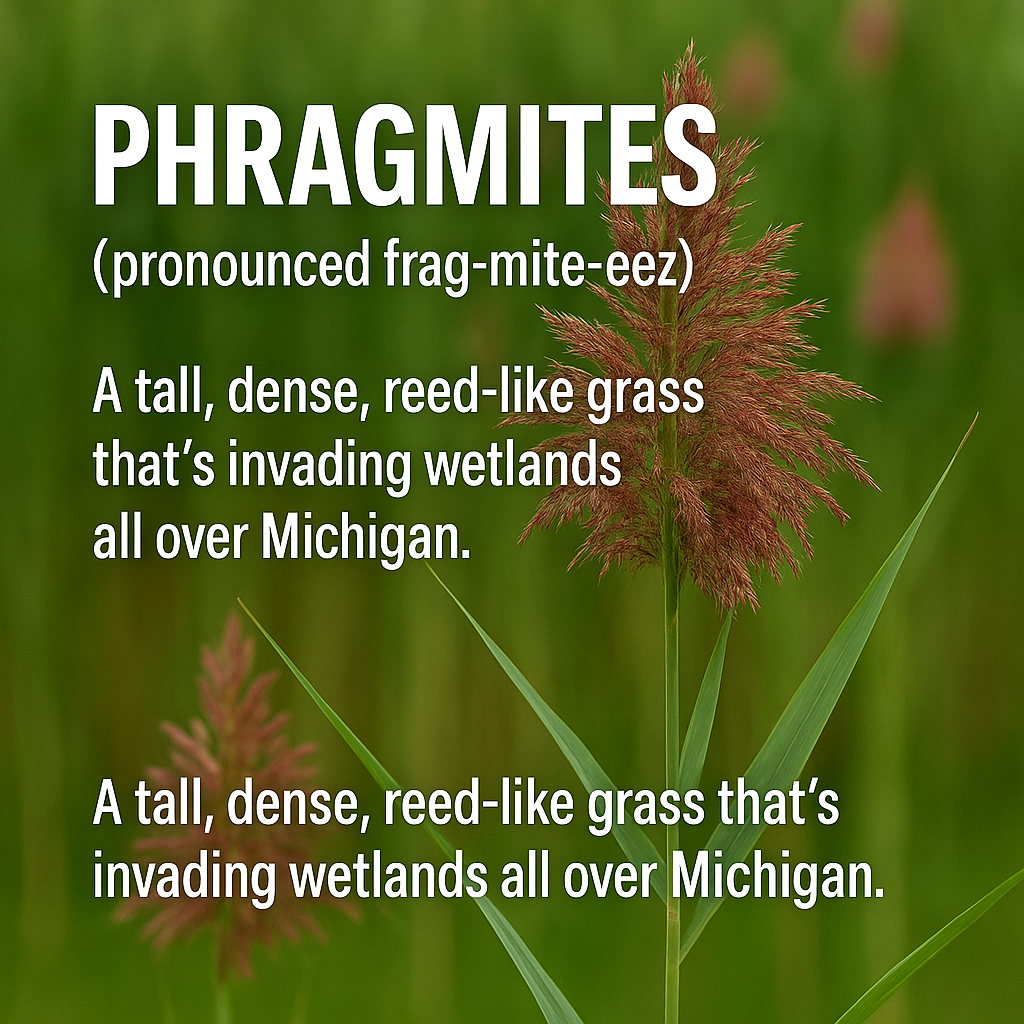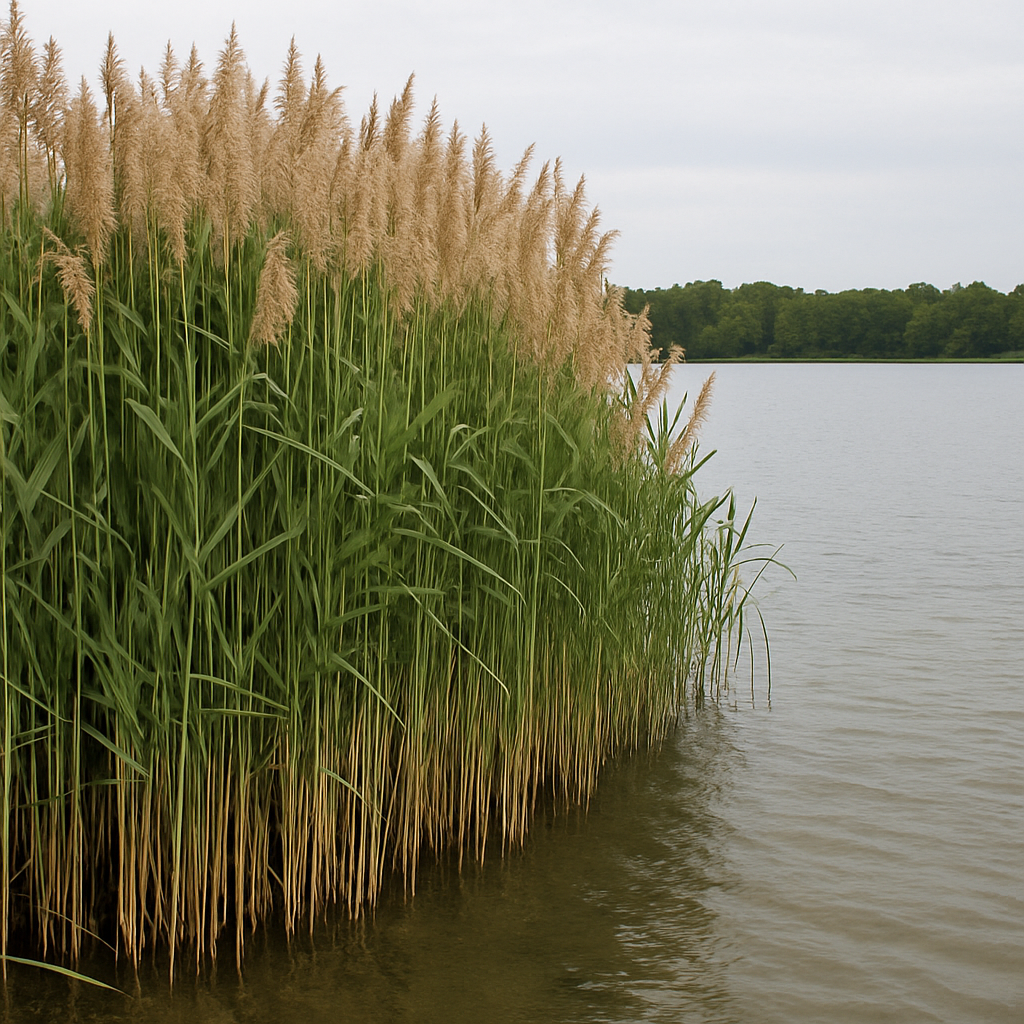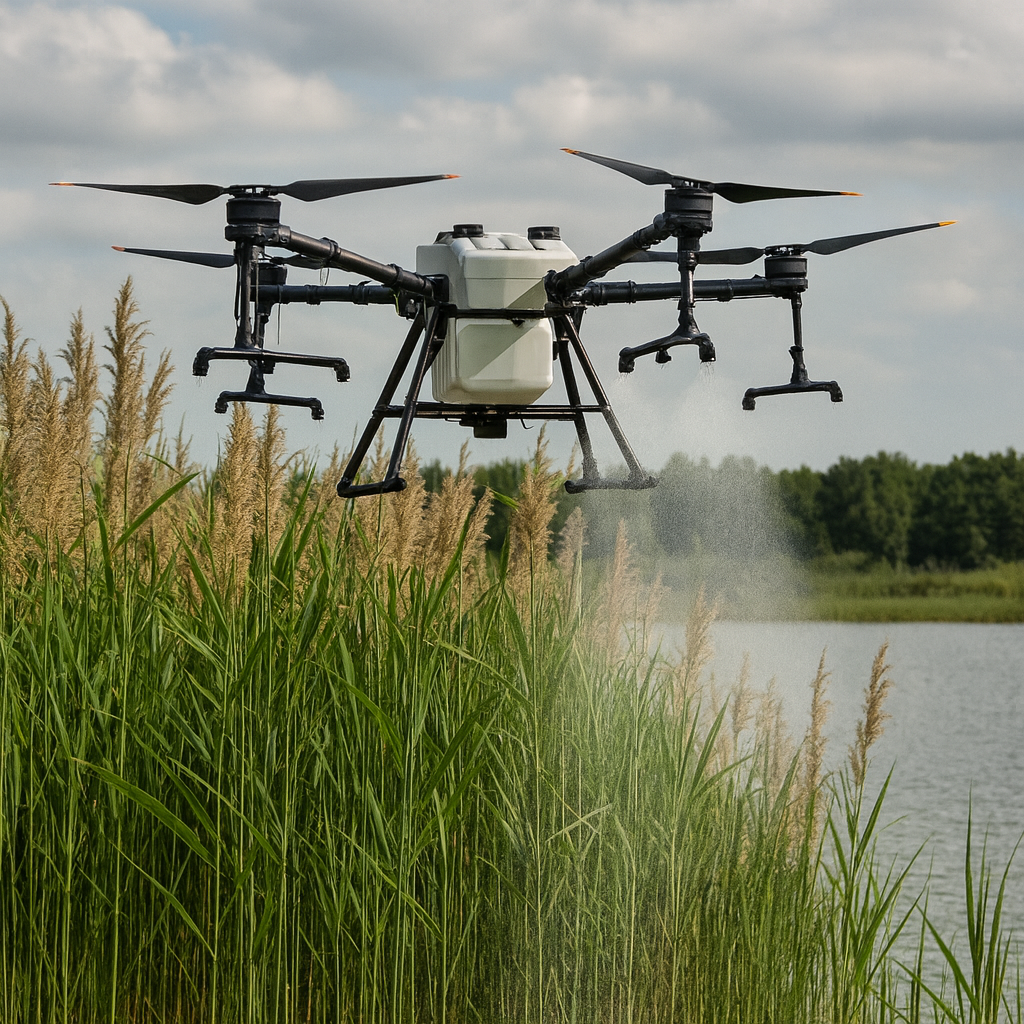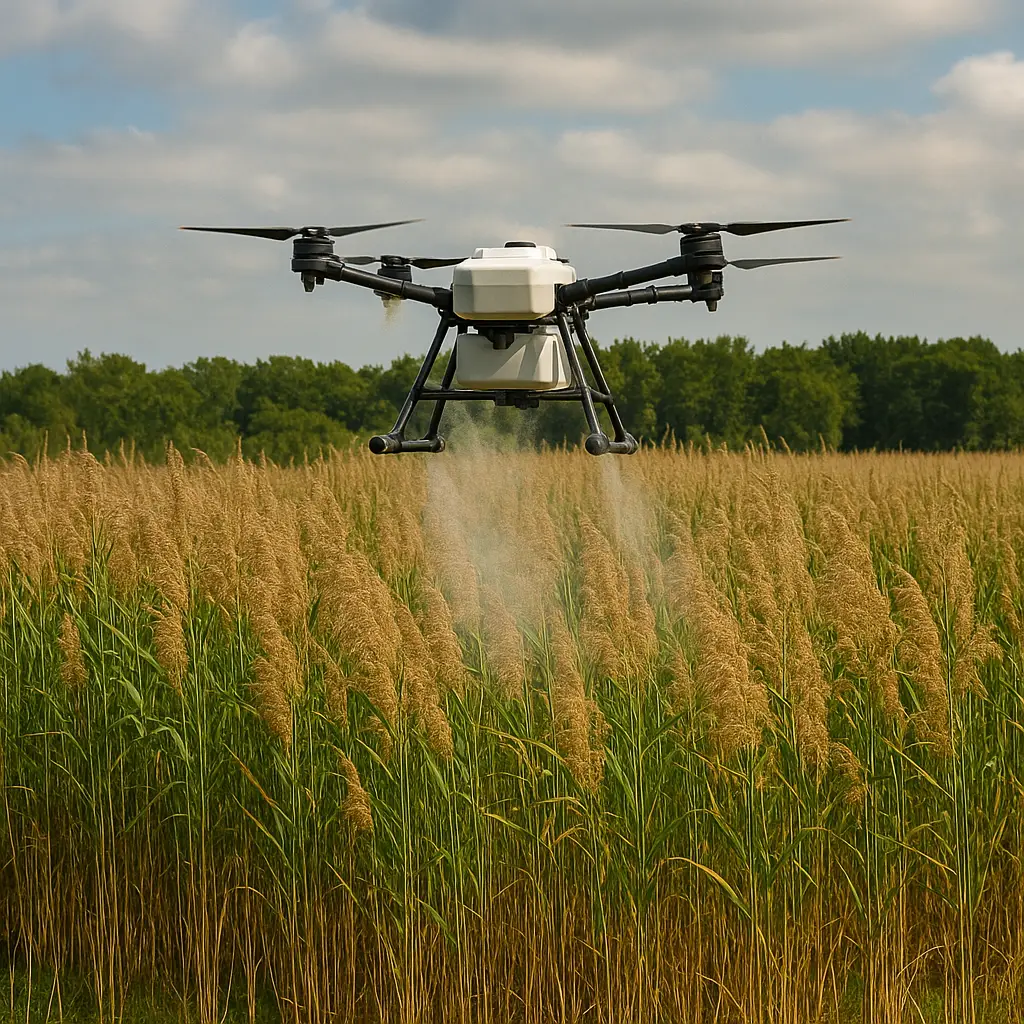What the Heck is Phragmites?
Phragmites (pronounced frag-mite-eez) is a tall, dense, reed-like grass that’s invading wetlands all over Michigan. Around here, we just call it “frag”—because once you’ve dealt with it, you’ll be on a first-name basis too.
This plant is no ordinary nuisance. Frag grows in thick, impenetrable stands that choke out native plants, block views, limit access to the water, and make life miserable for local wildlife. Once it gets a foothold, it can take over hundreds of acres if left unchecked.
There are two types of Phragmites:
Native Phragmites – Harmless and part of our natural ecosystem.
Invasive Phragmites – Not from here, not welcome, and a real pain in the neck.
Sure, some people think it looks kind of pretty with its reddish-purple seed heads waving in the wind. You’ll even see dried frag stalks sold at craft shows or used in floral arrangements. In other countries, Phragmites is used as roof thatching or burned for heat.
But here in Michigan? It’s just a dangerous weed that doesn’t belong.
Why is Phragmites a Problem?
Invasive Phragmites does more than just ruin the view. It creates real, measurable damage to:
Shoreline access – It’s nearly impossible to walk through a frag stand.
Biodiversity – It outcompetes native species and provides little to no food or shelter for local wildlife.
Water quality – Frag grows so thick that it slows water flow, causing stagnant conditions and excess muck buildup.
Property value – Nobody wants to live next to a wall of weeds.
It spreads aggressively by both seed and underground rhizomes (root systems), which makes it incredibly difficult to remove once it’s established. You can’t just mow it or burn it and expect it to stay gone. You need to get to the root of the problem—literally.
Can I Get Rid of Phragmites Myself?
Yes… sort of.
If you’re dealing with a small area—say, an acre or less—you can try to control Phragmites yourself. At Savin Lake Services, we carry AquaNeat®, a glyphosate-based herbicide designed for use near water. Glyphosate is the active ingredient that attacks frag right at the root.
But be warned:
Frag can grow over 10 feet tall.
It’s difficult to reach the tops without professional equipment.
Applying herbicide incorrectly can damage native vegetation or cause runoff issues.
You’ll still have to remove the dead stalks, or they’ll block regrowth of healthy plants.
Most homeowners give it a shot once and quickly realize it’s a tough, messy job. Between the chemicals, the equipment, and the cleanup—most folks decide to let us handle it.
How Savin Lake Services Removes Phragmites
This is where we shine.
At Savin Lake Services, we specialize in the safe, effective removal of invasive frag using methods that work. One of our favorite tools is our Aerial Drone Application service—a high-tech, low-impact way to reach even the tallest, thickest stands.
Here’s our process:
Timing is everything – We target frag in late summer or early fall, before the first frost. This is when the plant is most vulnerable.
Drone application – Our professional-grade drones spray herbicide directly on the tops of the plants. The chemical seeps down through the stalk and into the root system.
Follow-up – In some cases, we return in the spring for a second treatment to make sure the frag stays gone.
We don’t just kill what you can see—we attack the plant where it grows underground. That’s the only way to get long-term results.
Can Dredging Help With Phragmites?
Absolutely.
While herbicide application is the first step in killing Phragmites, dredging is often the best way to keep it from coming back.
Why? Because frag loves shallow, mucky conditions. Once we kill the plant above ground, dredging can:
Remove dead stalks and root matter that would otherwise decompose and regrow.
Lower sediment levels that allow frag to thrive.
Restore water flow and improve oxygen levels, making it harder for invasive species to return.
Create better habitat for native plants and animals.
Think of dredging as the final cleanup—like pulling out the weeds and tilling the garden afterward. It’s a powerful combo that helps restore your shoreline for good.
If you’re dealing with a lakefront property where frag has built up for years, we’ll often recommend integrating herbicide treatment with selective dredging. This gives you the best chance at a clean, usable, and beautiful shoreline.
FAQ: Phragmites Edition
Q: Is AquaNeat safe to use around water?
Yes. AquaNeat is EPA-approved for aquatic use. We follow all application guidelines to ensure safety for your lake, fish, pets, and family.
Q: Will Phragmites come back after treatment?
If left alone, yes. But with proper follow-up and possibly some dredging, we can knock it back for years. Ongoing shoreline management is key.
Q: How fast does Phragmites spread?
Very fast. A single acre of frag can become five acres in just a few seasons. It spreads by wind-blown seeds and underground rhizomes.
Q: Do I need a permit to treat Phragmites?
In many cases, yes—especially for chemical treatment or dredging. The good news? We handle all of that for you.
Why Choose Savin Lake Services?
We’re not just licensed professionals—we’re passionate about Michigan’s waterways. Our team has decades of experience in aquatic weed management, lake restoration, and shoreline improvement.
✅ Licensed and insured
✅ Approved AquaNeat dealer
✅ State and DNR compliance experts
✅ Aerial drone precision spraying
✅ Shoreline dredging services
Most of all, we treat your lake like it’s our own. Because around here, keeping Michigan’s lakes clean is more than just a job—it’s a way of life.
Ready to Reclaim Your Shoreline?
Phragmites doesn’t wait—and neither should you. Whether you want to try AquaNeat® yourself or have our drone and dredging crews take care of everything, Savin Lake Services is here to help.
Scroll down and hit the Contact Us button (yep, the big blue one). We’d put the link right here, but we like to keep you on the page a little longer—Google likes that, and we like Google. 😉
Let’s work together to restore your shoreline and protect Michigan’s lakes and wetlands for generations to come.





